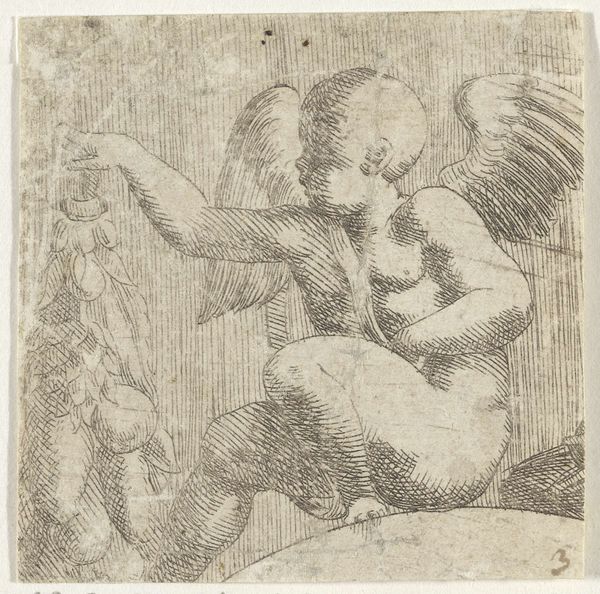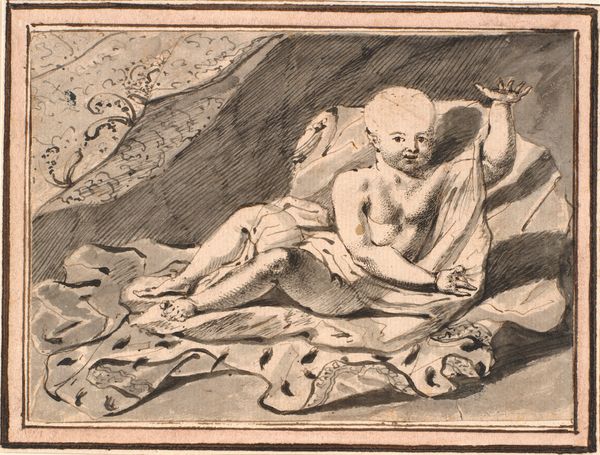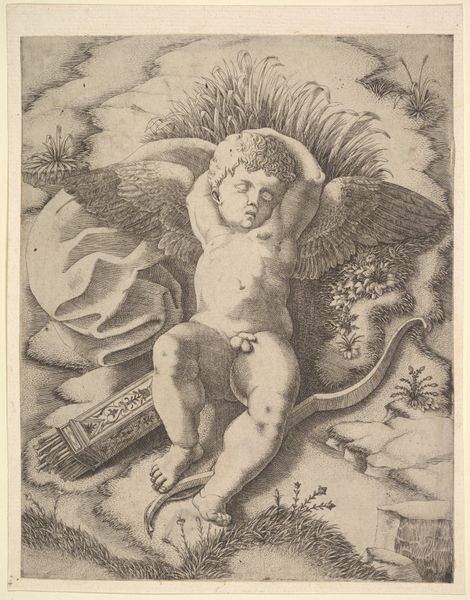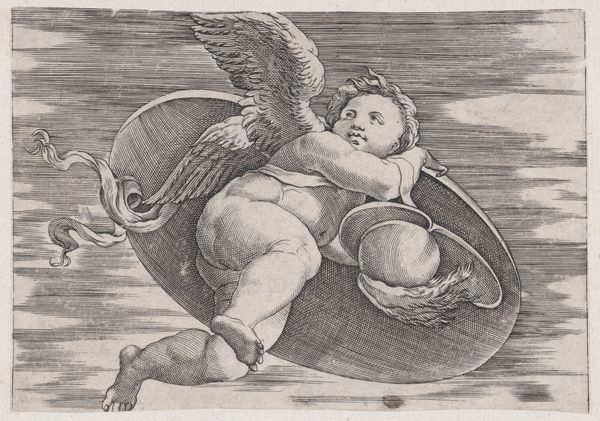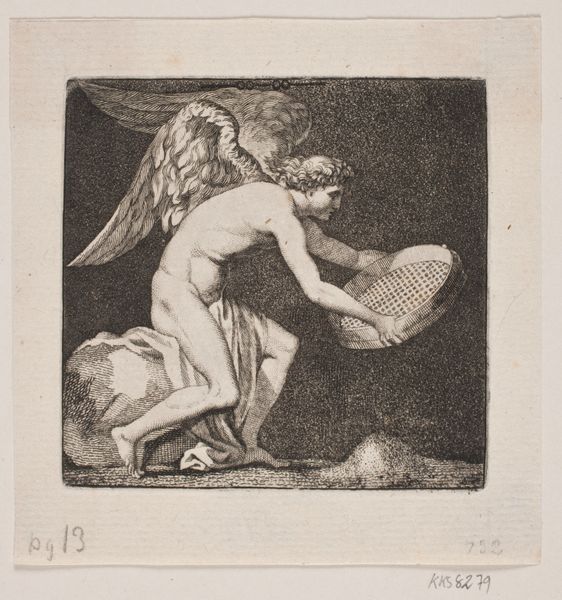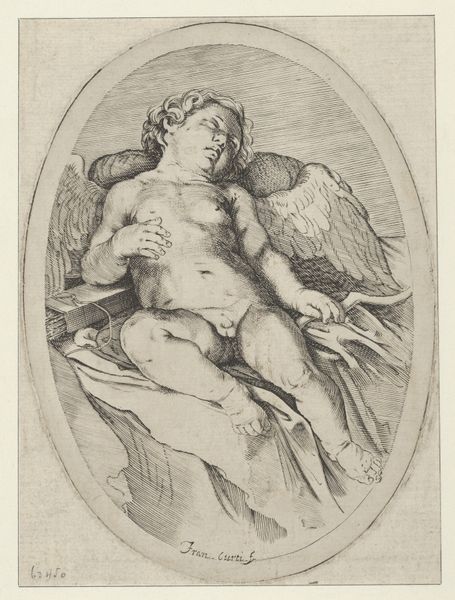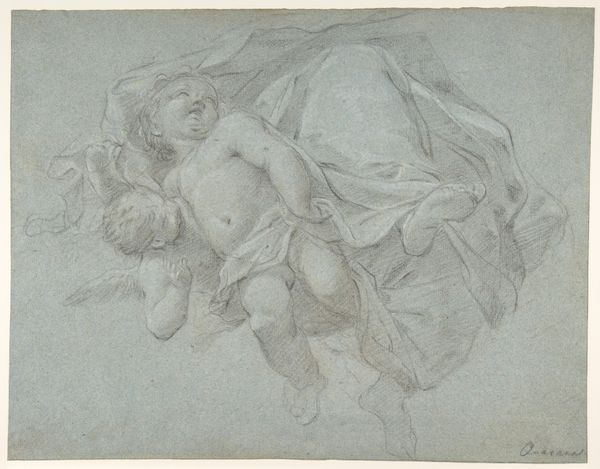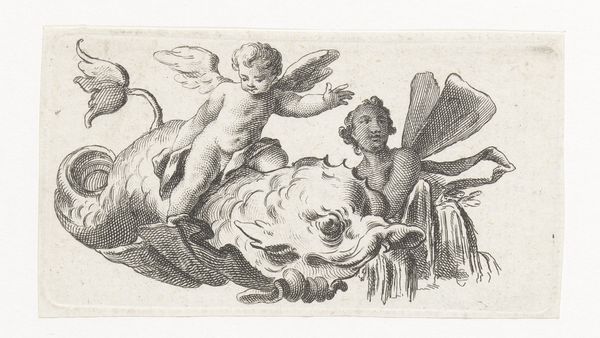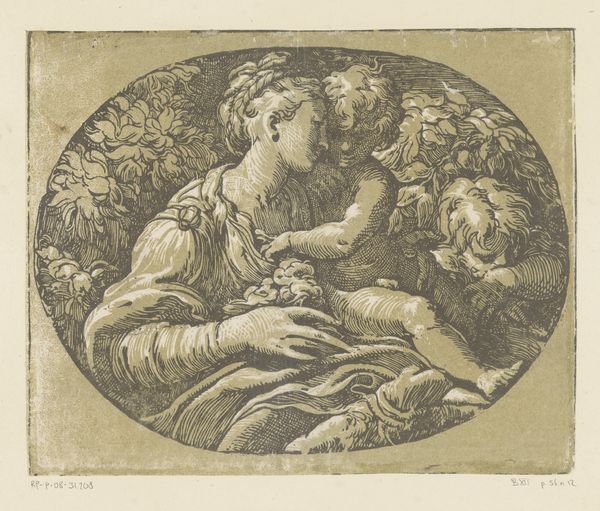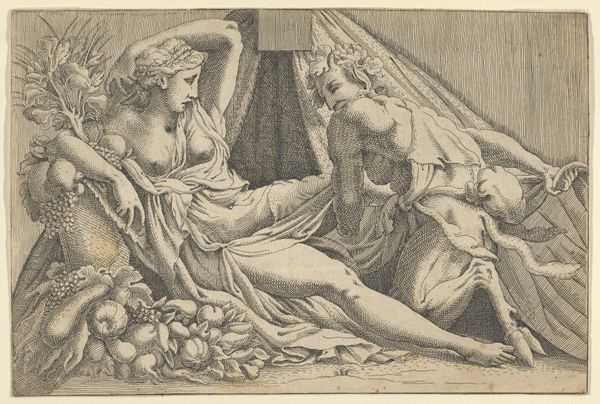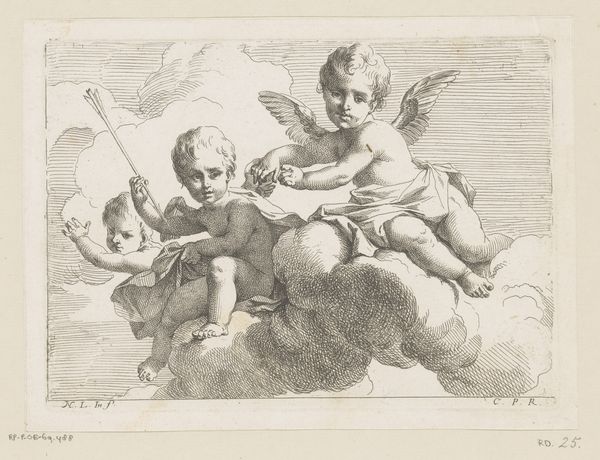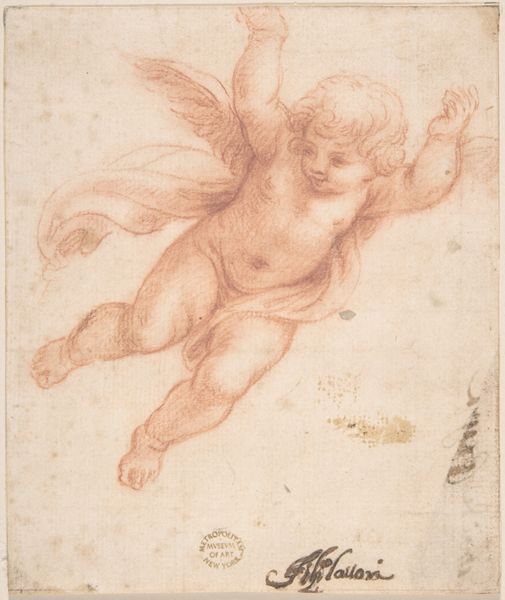
drawing, print, paper, ink, pen
#
portrait
#
drawing
#
baroque
# print
#
paper
#
11_renaissance
#
ink
#
pencil drawing
#
pen
Dimensions: 90 × 121 mm
Copyright: Public Domain
Curator: The image before us, "Putto Holding Sudarium," created by Cornelis Bloemaert, is a drawing rendered in ink on paper. The work currently resides here at The Art Institute of Chicago. It depicts, well, a putto holding a sudarium. What’s your immediate read? Editor: Ha! A putto looking somewhat glum. It’s striking how he’s presenting this cloth, almost like he’s unveiling… well, a really old tablecloth. The fine linework, though, creates a kind of luminous quality. Curator: The luminosity likely derives from Bloemaert's refined skill with the pen and ink. The meticulous hatching technique is certainly something to note; it's almost scientific in its precision. Beyond just a depiction of a chubby cherub, it carries the weight of Baroque sensibilities, doesn’t it? Editor: Definitely. I see this work as a visual bridge between mortal experience and divine narratives. This winged child presents the sudarium – a cloth often associated with the face of Christ. Bloemaert asks us to consider themes of purity, sacrifice, perhaps even suffering. He’s holding back, though, like he doesn't fully grasp what this cloth signifies. Curator: Absolutely, the symbolic layering here is substantial, especially within its historical and artistic context. This image really echoes a common symbolic language. It uses archetypes that have always evoked ideas around sacrifice and the sacred, which resonate profoundly within human experience. Editor: And that tension between the cherubic innocence of the putto and the weighty significance of the sudarium creates a compelling narrative. It reminds me how we imprint meaning onto objects and then ask them to contain our fears, hopes, our entire existential questioning. Curator: Right, like how images can contain emotional histories and continue to evolve as time goes on. Well, as Bloemaert sought to illuminate his age, this drawing continues to engage us centuries later. Editor: It really does! And after considering those subtle features, I can better appreciate how, through an object and the emotional state of a putto, it's so effectively delivered a meditation on mortality, belief, and the human condition.
Comments
No comments
Be the first to comment and join the conversation on the ultimate creative platform.
